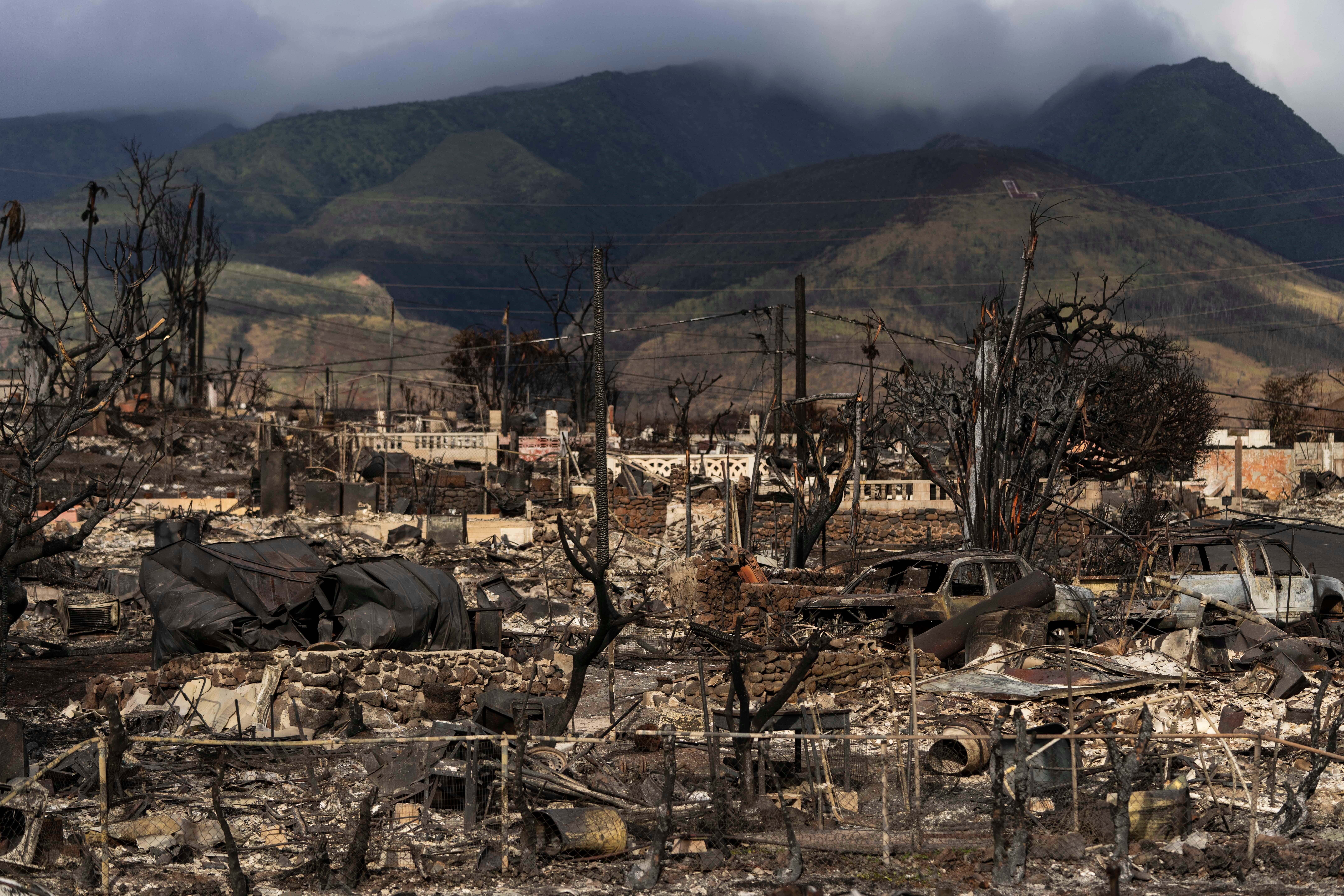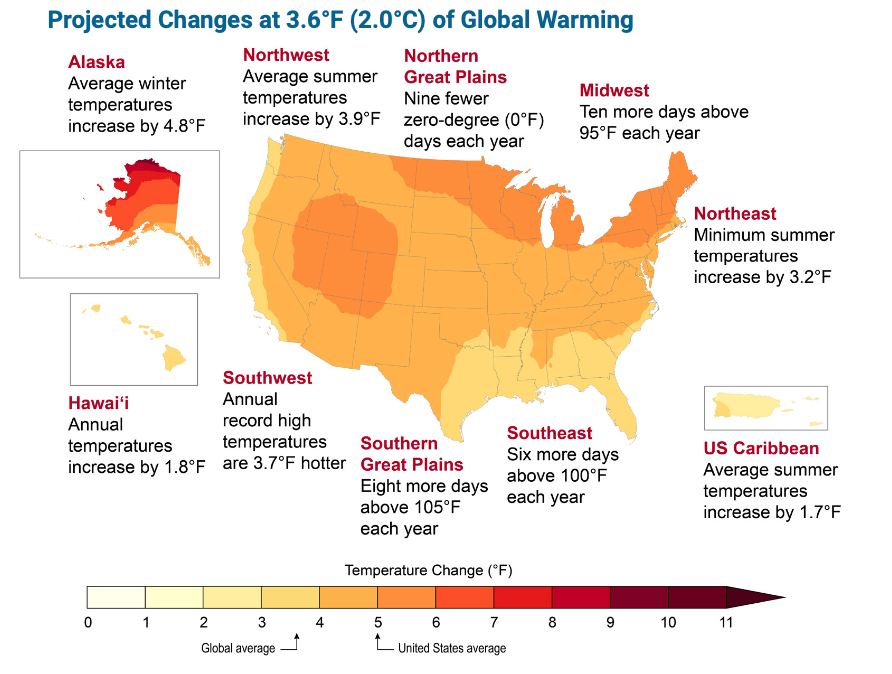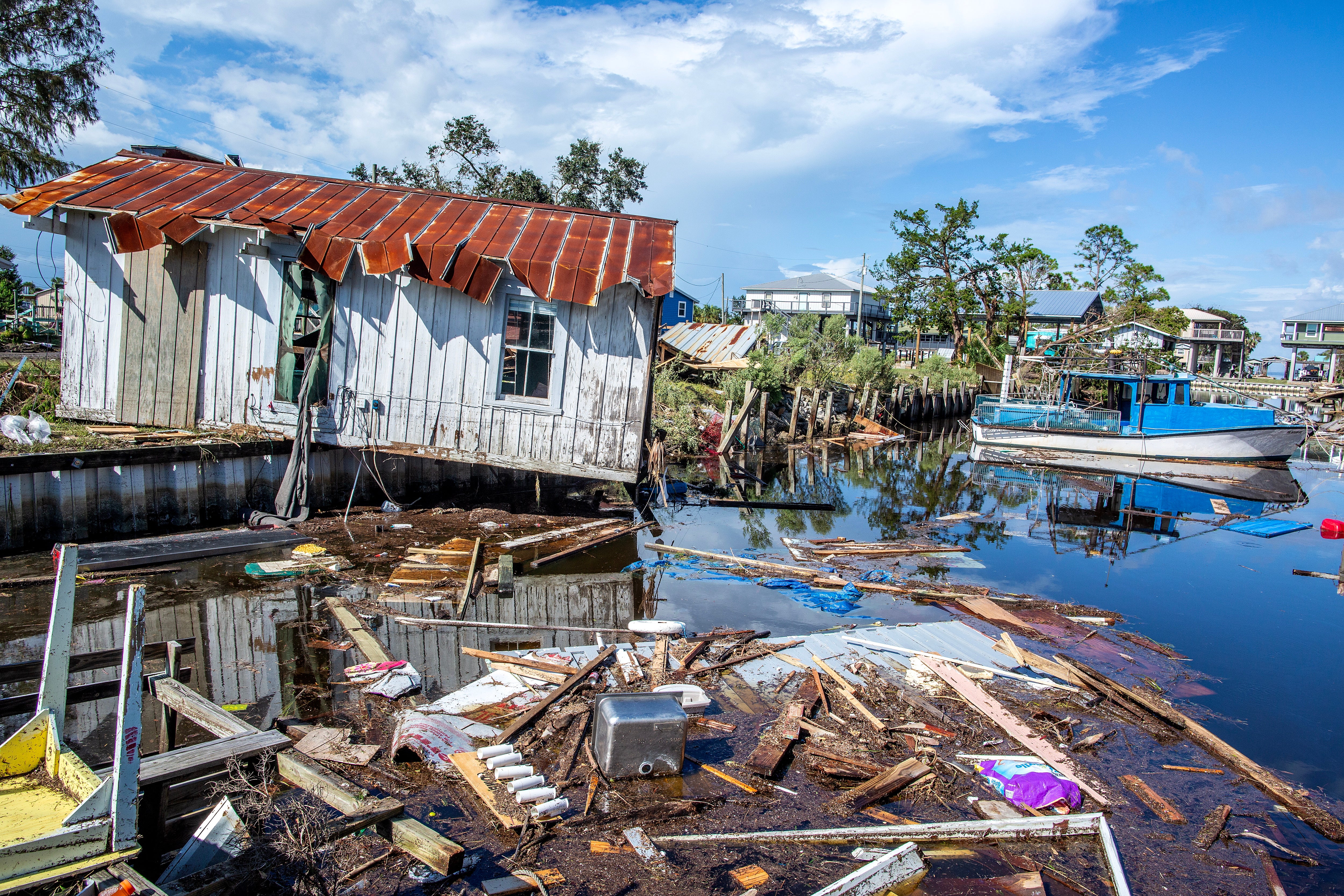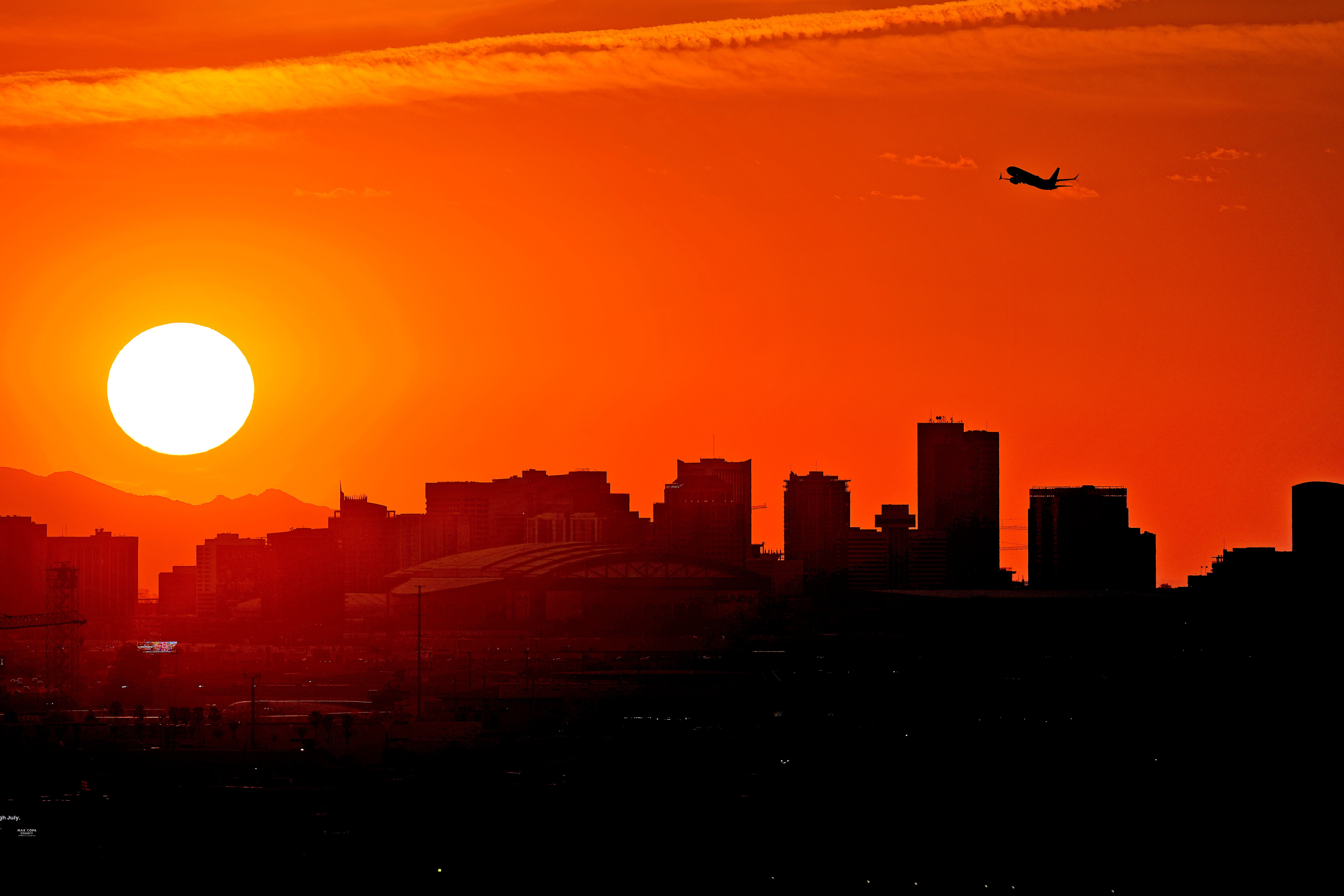Biden administration releases ‘gold standard’ climate report which Trump tried to thwart
The US experiences a billion-dollar disaster around every three weeks on average, compared to once every four months in the 1980s, Louise Boyle writes


The US has published the latest in its cyclical assessments on the climate crisis, the “gold standard” report on how rising global heat is impacting the nation today, and what the future is likely to hold.
The National Climate Assessment (NCA) is a comprehensive look at how the climate crisis is impacting all regions and sectors along with a roadmap for how best to tackle impacts – from wildfires and heatwaves to crop failures and destructive flooding.
The NCA has been mandated by law since 2000 and is now its fifth iteration after the last report, NCA4, was published in 2018.
NCA5 had a rocky inception after former president Donald Trump tried to derail the report but failed – largely thanks to the steeliness of the scientists involved,The New York Times reported at the time. Mr Trump, a perpetual climate denier, took a sledgehammer to dozens of climate and environmental regulations while in office.
The report, released on Tuesday, involved hundreds of scientists and experts from across the US, Guam, Puerto Rico, and US Virgin Islands.
The Biden administration also announced more than $5bn for resiliency efforts including to strength and modernize the electric grid, accelerate community projects, and upgrade hydropower in drought-stricken regions.

Since the last report, scientists have refined their climate projections for this century. The estimated range of global warming has narrowed to 2.5C–4C (4.5F–7.2F) - but is still far above the relatively-safe limits of the global Paris Agreement.
Scientists are also increasingly confident in linking many extreme weather disasters to the climate crisis. For example, climate change was estimated to have increased rainfall of Hurricane Harvey, which slammed into the Gulf Coast in 2017, by about 15-20 per cent.
While climate disasters now frequently play out on the US nightly news, the sweeping stocktake still has the ability to shock.
The US experiences a billion-dollar disaster around every three weeks on average, compared to once every four months in the 1980s.
Extreme events cost the US nearly $150bn each year - a “conservative” estimate, NCA5 cautions, because it doesn’t account for deaths, healthcare costs, or damage to ecosystems more widely.
Communities of color and low-income households are bearing the brunt of these disasters, the report revealed. For example, Black Americans are more likely to live in older homes with poor insulation and inefficient cooling systems, causing more health issues.
Air quality is worsening as extreme heat makes pollution levels more severe, more frequently.

Air pollution is also deteriorating due to wildfires, like the dire situation across many states during summer 2023 due to unprecedented blazes in Canada. Wildfires emit gases and fine particles that contribute to asthma, other health problems and premature death.
The climate crisis is also having an impact on food supplies and will continue to do so, making food less available and more expensive. This will disproportionately affect the nutrition and health of women, children, older adults, and poorer communities, the study found.
Many US households are already feeling the financial burden of climate change, NCA5 notes, and these costs will increase as healthcare, food, insurance, building, and repair costs become more expensive. Public budgets will be stretched as spending increases on healthcare and disaster relief.
“Quality of life is also threatened by climate change in ways that can be more difficult to quantify, such as increased crime and domestic violence, harm to mental health, reduced happiness, and fewer opportunities for outdoor recreation and play,” the report explains.
Homes, property, and critical infrastructure like roads, public transport and hospitals are being affected in greater numbers.
Coastal communities —home to 40 per cent of the US population —are facing sea level rise with millions of people at risk of being displaced from their homes by the end of the century.
What’s more, stability of the polar ice sheets is more uncertain with every temperature increase meaning that 3-7 feet of sea level rise along the continental US by 2100 cannot be ruled out.
The climate crisis will impact the entire US but how communities experience it will vary from region to region between now and 2030.
In the Northeast, more extreme weather - like the catastrophic flooding which hit New York, Vermont and Massachusetts this year - will damage critical infrastructure. Runoff and flooding are also responsible for flows of debris and contaminants that cause harmful algal blooms and pollute drinking water.

Rising ocean temperatures are causing important fisheries in New England like scallops, shrimp and cod to move northward.
Meanwhile in Alaska, climate change has already played a role in 18 major fishery disasters that were especially damaging for coastal Indigenous Peoples, subsistence fishers, and rural communities, the report states.
In the US Caribbean, food insecurity will rise due to crop losses caused by more severe tropical cyclones. Labour losses will also increase there, and in the Southeast, as it becomes too hot for people to work safely outdoors at certain times of year.
In the northern Great Plains, more heat will reduce the snowpack and threaten the water supply but also the ability to fight wildfires.
Still, despite the litany of concerns, the report has cause for optimism. US greenhouse gas emissions fell 12 per cent between 2005 and 2019, largely due to declining coal use. Since 2017, transport has overtaken electricity generation as the largest source of carbon pollution.
The Biden administration says that the US is “on a path” towards cutting emissions in half by 2030, bolstered by cheaper zero-carbon and low-carbon energy options. Wind energy costs dropped 70 per cent and solar energy costs dropped 90 per cent just over the last decade, NCA5 reported.
When it comes to adapting to the climate hazards that can no longer be avoided, the assessment draws a line between incremental change and transformational action.
For example, people can use air conditioning units during heatwaves - or a city and its buildings can be redesigned to combat heat on a greater scale.
When it comes to drought, residents can reduce their water consumption - or water-intensive industries like farming can be shifted to match rainfall patterns. Homes can be elevated above flood waters, or more houses built in less flood-prone places.
A variety of strategies are already in the works across regions and sector.
To protect the food supply, farmers and ranchers are turning to data-driven monitoring of their crops, and adopting practices that are more harmonious with the local ecosystem to improve soil and plant quality.
Across the Great Plains, more people will work jobs in renewables, low-carbon technologies, and electrification as oil and gas jobs decline. The southern plains accounted for 42 per cent of national wind-generated electricity in 2022.
Who will get these jobs will also change how the US energy industry has typically been made up.
“Workforce training and equitable access to clean energy jobs, which have tended to exclude women and people of color, are essential elements of a just transition to a decarbonized economy,” NCA5 notes.
Grid expansion and energy efficiency efforts are already being rolled out in places like Nevada, Vermont, and Alaska.
The city of Pittsburgh, Pennsylvania now requires developers to take the projected increases in heavy rainfall into account in new construction.
In southern Alaska, the Chugach Regional Resources Commissions is combining Indigenous knowledge with western science to address threats to traditional food. Kelp farming is growing in order to reduce ocean acidification while providing income.
Yet, with global emissions still rising, climate risks to the US will keep rising.
“Every degree of global warming we avoid matters, because each increment of warming is expected to lead to more damage and greater economic losses in the United States,” NCA5 warns.
“Each climate action taken to reduce and avoid warming reduces those risks and harmful impacts.”
Join our commenting forum
Join thought-provoking conversations, follow other Independent readers and see their replies
Comments
Bookmark popover
Removed from bookmarks